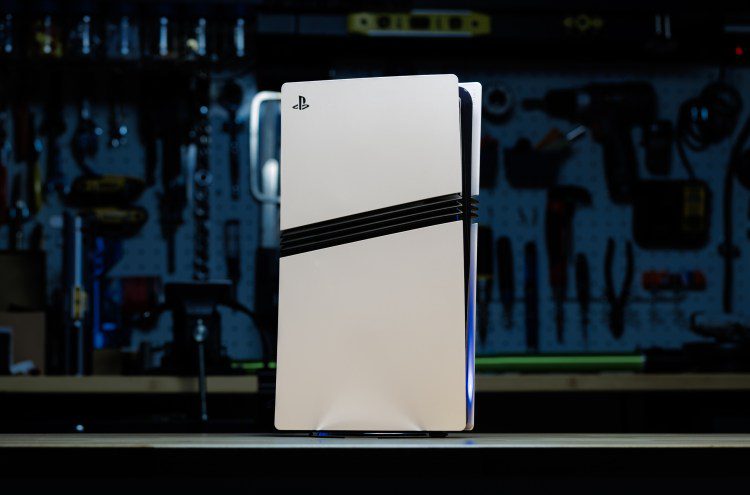
Sony has unveiled exciting new GPU technology developments for its upcoming console, likely the PS6, during a recent discussion featuring key figures from both Sony and AMD.
Anticipating the Future: PS6 and Beyond
Mark Cerny, the lead architect behind the PlayStation 5 and its anticipated Pro version, recently joined Jack Huynh, Senior Vice President and General Manager of AMD’s computing and graphics group, in a YouTube video. In this nine-minute presentation, they explored the advancements in graphics technology that are being co-developed for Sony’s next console, which is expected to arrive in “a few years time.” However, both Cerny and Huynh emphasized that these technologies are still in their “very early days” and currently exist only in simulation.
The PS5 Pro, priced at $750, will not incorporate all of these new features, highlighting the generational leap that the PS6 is set to represent. This upcoming console aims to push the boundaries of gaming graphics, making them more immersive and realistic than ever before.
Revolutionizing Graphics Processing
At the core of these advancements is a collaboration between Sony and AMD to enhance the capabilities of future GPUs in handling graphics upscaling, ray tracing, and the demanding path tracing techniques that contribute to creating lifelike game environments. Cerny noted that “the current approach has reached its limit,” indicating a pressing need for innovation in graphics technology.
Introducing Radiance Cores
One of the most significant developments introduced during the presentation is the concept of Radiance Cores. These specialized cores are designed to handle ray tracing and path tracing, akin to Nvidia’s RT Cores. Huynh explained that the integration of Radiance Cores into Sony’s next-generation consoles will not only enhance the gaming experience on the PS6 but will also likely be incorporated into AMD’s future desktop GPUs and potentially in its collaborations with Xbox.
The Radiance Cores promise to deliver a substantial speed boost in performance. By offloading the demanding tasks associated with ray tracing and path tracing, these cores will allow other components of the GPU to focus on processing shaders and textures more efficiently. This optimization is crucial for achieving higher frame rates and improved graphical fidelity in games.
AI-Assisted Upscaling Technology
Another area of focus in the upcoming GPU technology is AMD’s FSR Redstone, the latest iteration of its AI-assisted upscaling technology. This technology includes features like Neural Radiance Caching, which enhances the overall visual quality of games. As the gaming industry continues to evolve, the integration of advanced upscaling techniques will be vital for maintaining high performance while delivering stunning graphics.
Improving Compression Techniques
Compression is another critical aspect of the new GPU technology. Sony is building upon the Delta Color Compression technique used in the PS5 and PS5 Pro, which compresses textures and render targets. The next generation of hardware will utilize a more efficient method called Universal Compression, which compresses all elements in the graphics pipeline.
Huynh stated that this new compression technique will enable the GPU to deliver “more detail, higher frame rates, and greater efficiency.” The implications of improved compression are significant; it could raise the performance ceiling of the GPU, allowing it to operate more efficiently even in low-power modes. This is particularly relevant as gaming hardware continues to evolve toward more energy-efficient solutions.
Implications for Future Gaming Experiences
The advancements in GPU technology not only promise to enhance the PS6 but also have potential implications for other gaming platforms. The rumored PlayStation handheld, which is reportedly in development, could benefit from the collaborative efforts between Sony and AMD to reduce the stress on GPUs. The ability to optimize performance while minimizing power consumption is essential for handheld devices, which often face limitations in battery life and thermal management.
Sony has already made strides in efficiency with the PS5, introducing a new Power Saver mode that allows for reduced game performance in favor of lower power consumption. This feature demonstrates the company’s commitment to balancing performance with energy efficiency, a critical consideration for future gaming devices.
Enhancing the Handheld Gaming Experience
As the gaming landscape shifts toward more portable solutions, the advancements in GPU technology could pave the way for a new generation of handheld consoles. The integration of Radiance Cores and improved compression techniques could enable handheld devices to run graphically intensive games without sacrificing performance or battery life. This would mark a significant milestone in the evolution of gaming hardware, allowing players to enjoy console-quality experiences on the go.
Stakeholder Reactions and Industry Context
The announcement of these new GPU technologies has garnered attention from various stakeholders in the gaming industry. Developers are particularly interested in how these advancements will affect game design and performance optimization. The ability to leverage AI-assisted upscaling and improved compression techniques could lead to more visually stunning and immersive gaming experiences.
Furthermore, the collaboration between Sony and AMD underscores the importance of partnerships in the tech industry. As competition intensifies among console manufacturers, the ability to innovate and deliver cutting-edge technology will be crucial for maintaining market share. The advancements discussed in the YouTube presentation are indicative of a broader trend in the gaming industry, where companies are increasingly focusing on enhancing graphical fidelity and performance.
Looking Ahead: The Future of Gaming Consoles
As the gaming industry continues to evolve, the introduction of new GPU technologies will play a pivotal role in shaping the future of gaming consoles. Sony’s proactive approach to developing advanced graphics capabilities for the PS6 and potential handheld devices demonstrates a commitment to pushing the boundaries of what is possible in gaming.
While the PS5 and PS5 Pro have set a high standard for performance, the forthcoming PS6 is poised to take that standard even further. The integration of Radiance Cores, AI-assisted upscaling, and improved compression techniques will not only enhance the gaming experience but also set a new benchmark for future consoles.
In conclusion, the advancements in GPU technology being developed by Sony and AMD signal an exciting future for gaming. As the industry moves toward more immersive and visually stunning experiences, the collaboration between these two tech giants will be instrumental in shaping the next generation of gaming consoles. For now, the gaming community eagerly awaits the arrival of the PS6 and the innovations it will bring.
sony teases new gpu tech for the Source: Original report
sony teases new gpu tech for the
Was this helpful?
Last Modified: October 10, 2025 at 6:44 pm
3 views















